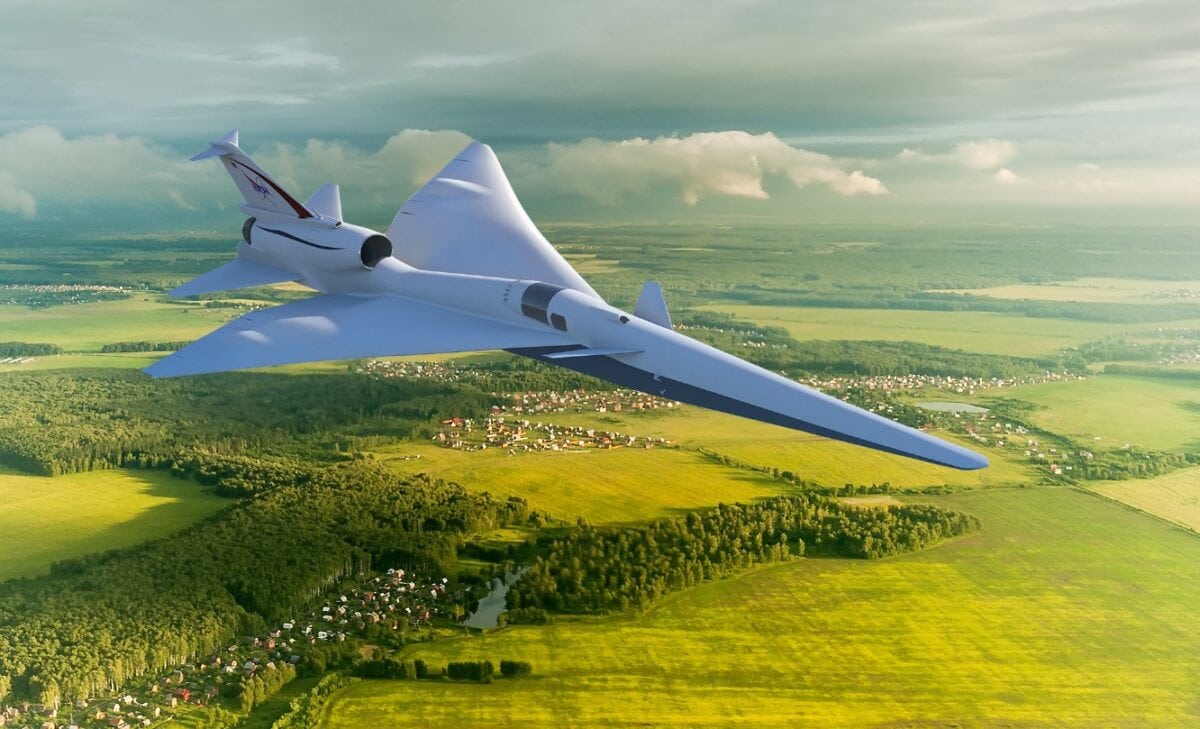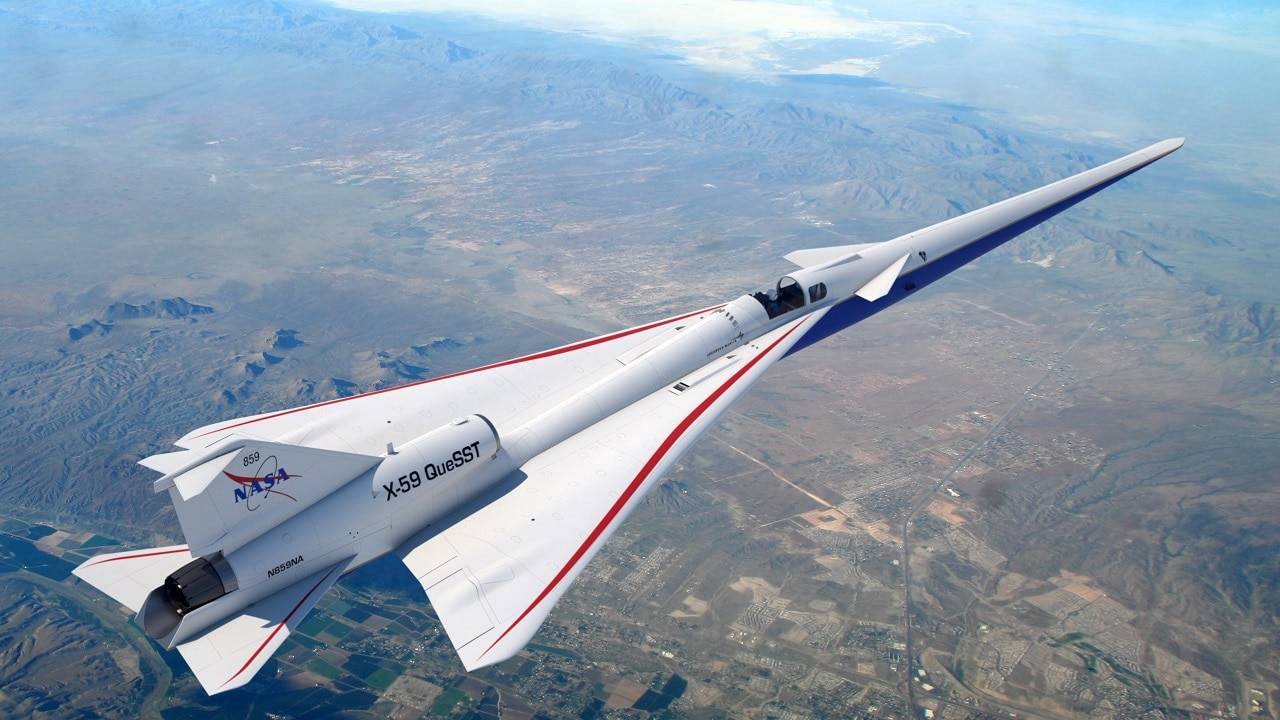Supersonic commercial aircraft, such as the Concorde, cut the travel time from Europe to the United States down to just a couple of hours. However, such speed came with some significant downsides including inefficient fuel consumption, but the biggest issue was the sonic boom created as such aircraft flew overhead. Those on the ground would typically hear a sound as loud as a crack of thunder – often greater than 100 decibels. In some cases, the shockwaves even broke windows in the buildings the aircraft flew over.
As a result, this Thursday marks the 50th anniversary since the Federal Aviation Administration (FAA) enacted a ban on commercial supersonic flight over land in the United States due to the loud sonic boom produced by aircraft flying faster than sound.
Quesst – the Quest for a Quieter Supersonic Aircraft
There are now multiple efforts underway to keep the speed and reduce the noise. These include NASA’s Quesst mission, which is now set to collect data from several U.S. communities to see if a quieter supersonic aircraft is less disruptive. This data could result in the FAA replacing the ban with a new sound level-based rule.
Quesst is now in Phase 1, which began with the development of NASA’s X-59 research aircraft with technology that reduces the loudness of a sonic boom to a gentle thump at the ground. In 2018, NASA awarded Lockheed Martin a $247.5 million contract to design, build and deliver the Low-Boom X-plane. As part of future testing, the X-59 – designed at the Lockheed Martin Skunk Works – will fly over several U.S. communities to gather data on people’s responses to the sound generated during supersonic flight and deliver that data to national and international regulators.

X-59
A single pilot will fly the 99.7-foot-long, 29.5-foot-wide aircraft, which is powered by a single jet engine, while the X-59 can reach a top speed Mach 1.4 (925 mph) flying at 55,000 feet.
Testing Has Already Begun
Last year, the program conducted ground tests at the defense giant’s Texas facility, while structural and fuel calibration tests were also completed. The April 2022 experiments were conducted to ensure the aircraft’s ability to withstand the loads and stresses of supersonic flight – or flight at speeds faster than Mach 1.
During those tests, the X-59’s fuel systems were also calibrated and tested at Lockheed Martin’s Ft. Worth facilities. Since the airplane wasn’t actually flying, tests were conducted with the aircraft sitting on hydraulic jacks that are connected directly to the structure.
Future Phases
The program is now set to move ahead beginning next year.
Phase 2 – the “Acoustic Validation” – will take place next year when the X-59 will fly within the supersonic test range over NASA’s Armstrong Flight Research Center and Edwards Air Force Base in California to prove the quiet supersonic technology works as designed, aircraft performance is robust in real atmospheric conditions, and the X-59 is safe for operations in the National Airspace System.
This will be followed by Phase 3, the “Community Response Study,” which is scheduled to take place in the 2025-2026 timeframe. It will include those flights over several U.S. cities beginning in 2025, with feedback from residents regarding the sound the X-59 produces.
NASA will use the X-59 to gather data on how effective the technology is in terms of public acceptance. That data will be provided to regulators to consider lifting the ban on commercial supersonic travel over land.

“NASA’s Quesst mission is unique in that the decision to determine an acceptable level of sound for commercial supersonic travel will rest on the people who provide input based on what that they hear in their community when the X-59 flies over. If they feel the sound is acceptable, too loud, or don’t notice it, NASA will provide that data to national and international regulators,” the agency said via a statement to 19FortyFive on Wednesday.
The current rule for supersonic travel is based on a “speed limit,” yet, through data collection from communities presented to national and international regulators, it could change to a “sound limit,” the agency added.
MORE: The F-35 Now Comes in Beast Mode
MORE: Why the U.S. Navy Tried to Sink Their Own Aircraft Carrier
Author Experience and Expertise
A Senior Editor for 19FortyFive, Peter Suciu is a Michigan-based writer. He has contributed to more than four dozen magazines, newspapers, and websites with over 3,200 published pieces over a twenty-year career in journalism. He regularly writes about military hardware, firearms history, cybersecurity, politics, and international affairs. Peter is also a Contributing Writer for Forbes and Clearance Jobs. You can follow him on Twitter: @PeterSuciu.

